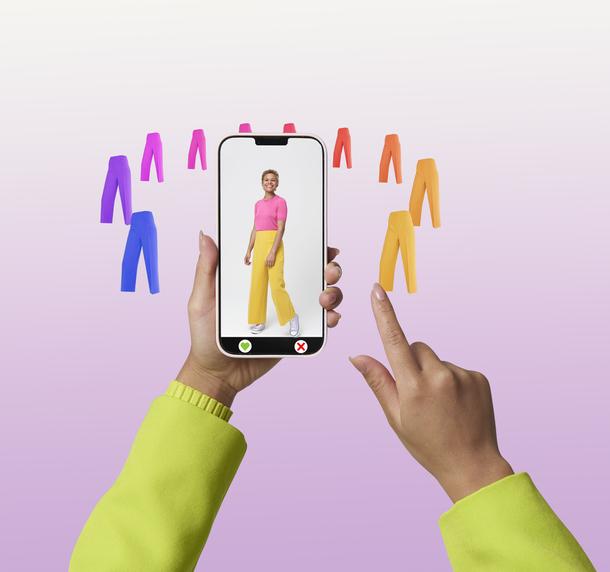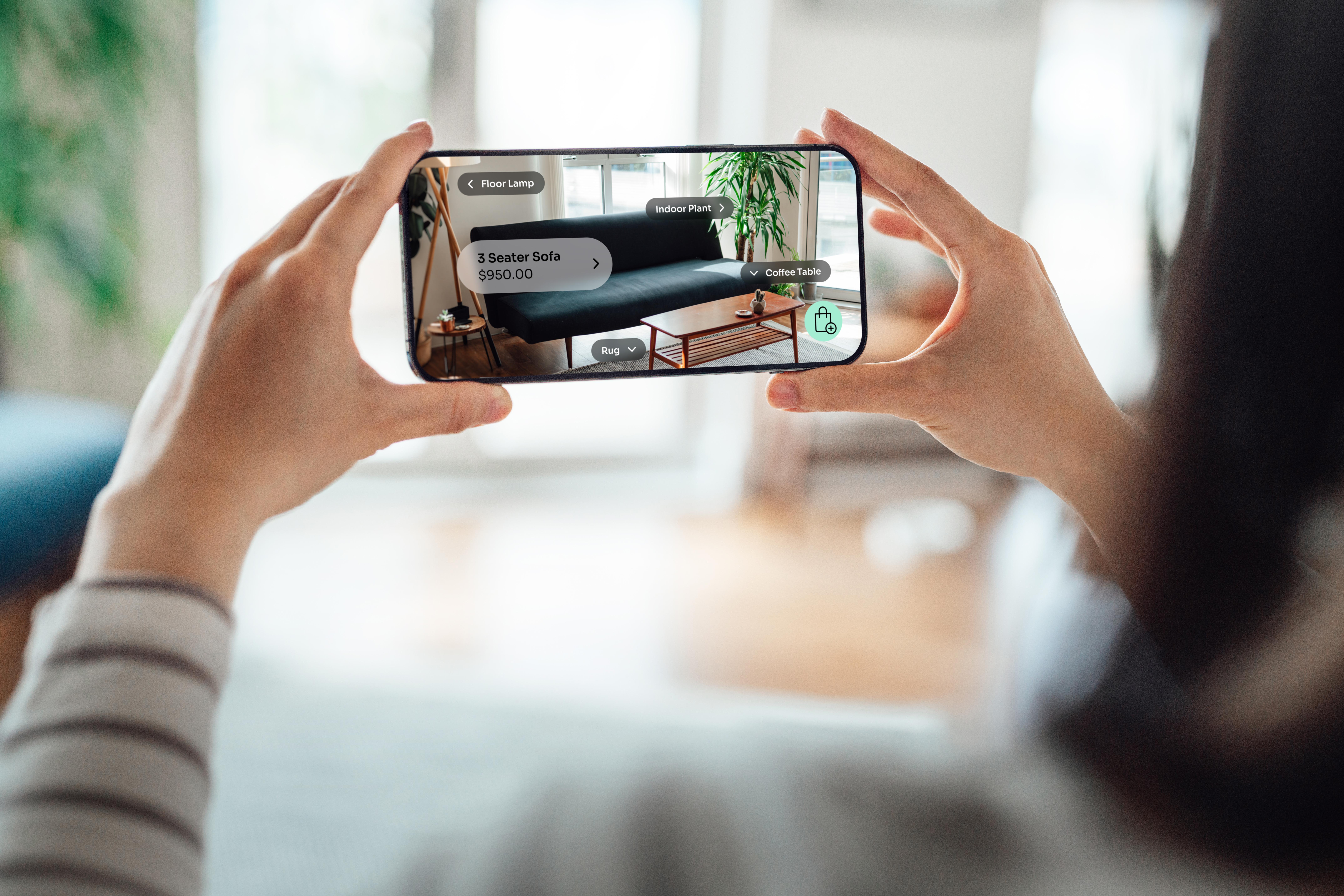When you combine your phone and the internet you have a powerful tool. Buy clothes and gadgets online, browse for a new couch, or select tiles for your kitchen makeover. Convenient, yes, but there are also drawbacks to making a purchasing decision based on images and/or video: Will that designer dress fit you? Will the sofa look good in your living room? Wouldn’t it be great to see the tile in your kitchen before ordering?
With augmented reality (AR), all that is possible. AR combines digital objects with the real world. For example, use your phone camera to scan your room, then digitally add the new piece of furniture to see how it would fit. Or send your photo to a fashion AR app and try on clothes using your virtual twin.
Augmented reality is changing how we enjoy retail experiences. Many retail companies are reaping its rewards: Businesses using AR are 41% more likely to catch the attention of consumers (Deloitte). Two thirds of shoppers want AR to help them with their shopping (Google), and by 2025, three quarters will use AR (Deloitte).
3 main ways to access AR
- The most popular is through your smartphone using AR apps or AR-ready websites.
- Specialised headsets like Meta’s Quest 2, and Apple’s upcoming Vision Pro.
- PC or laptop, using either apps or AR-ready websites.
How retailers are using AR

Retailers have a variety of tools at their disposal to generate value from augmented reality:
Virtual fitting rooms: AR lets customers try on clothes before they buy. Brands such as Zara and H&M have AR features in their mobile apps, and you can check out sneakers via AR apps from Adidas, Converse and Nike. There are also AR apps that represent multiple retailer brands. Shopify, for example, offers an AR fitting room to its retailers.
Product visualisation: Shoppers can look more closely at a product before they buy it. Swedish furniture company Ikea is an AR trailblazer and one of the first brands to release an augmented reality app. The Houzz app allows shoppers try out home renovation ideas before clicking “buy”.
Personalisation: AR provides a personal experience based on individual tastes. Retailers are using technology to get closer to their customers and understand those tastes. For example, makeup brand Sephora uses personalised data to help customers select eyeliner shades and can extend that information to retail branches.
Brand awareness: Marketing activities benefit substantially from augmented reality. South Africa’s Menlyn Mall has used AR to create virtual Easter egg hunts in your living room. Irish cider brand Bulmers uses AR to create animations and competitions when scanning its bottles and coasters. H&M uses in-store AR games to entertain kids and parents.
The impact of AR on retail experiences is already huge and will keep expanding. Shoppers can navigate store maps and find details on specific items. Displays and posters come to life, providing consumers with a more immersive and interactive experience.



